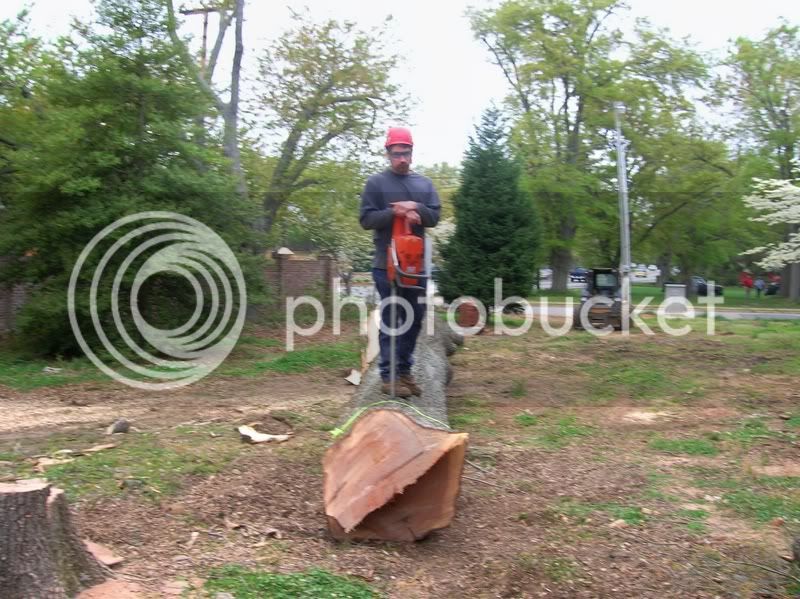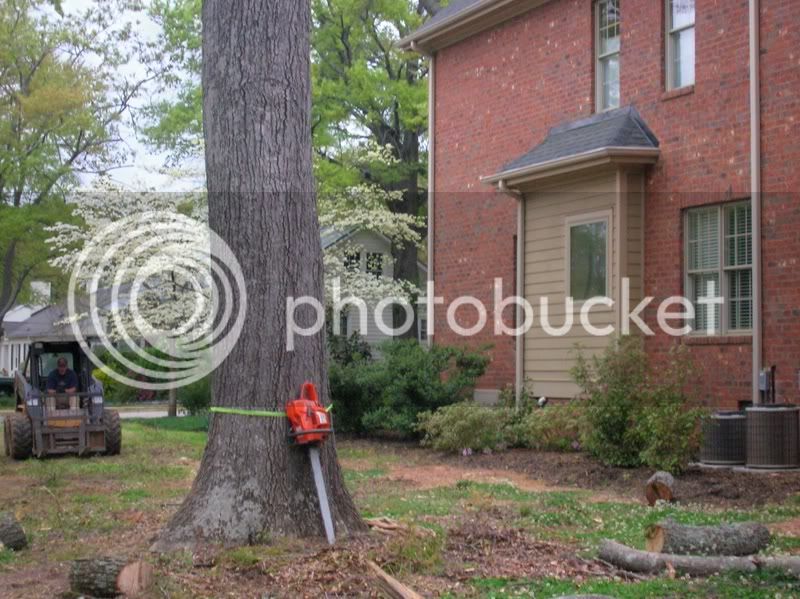That particular wood rarely leaves any fiber pull,there was alot of weight leaning straight back towards the house,so a rope was placed less than a foot from the very top for maximum leverage,then the new holland was used to pull it....Yes,the back cut was slightly high,but I used the lip left by the higher back cut,plus a couple of wedges to keep it from trying to twist one way or another...That did not have to be as precise as some falls I have made,but I did have to avoid the water line,those two holly trees and that brick wall...I knew that with the rope in the very top and the wedges to keep it from turning it was pretty much bound for where I wanted it,so technically I cut much more of the hinge than I shoule have to get a little more falling speed before the top of the wedge hit the base of the stump to gain as much jump as I could get...Anyone who has regularly fallen trees that big and bigger knows that they ain't gonna jump that far no matter what you do,but I made my best effort at this one and it worked....So ya'll keep BSing about using wedges on the occasional trees some of you are falling,and trying to find things wrong with everyone else,and I'll keep using what works for me every single day to make ends meet for myself and my family...Are any of your names on the sides of my dump trucks or grapple truck???I don't think so...Again,it all might not be by your spec books or how you dream about doing it someday,but I've built a half million dollar a year business by using these same things I've talked about here....What I suggested to the guy that started this thread was only to help him out and to keep himself or something or someone around him from potentially getting hurt while learning how to fall trees.
....


























































